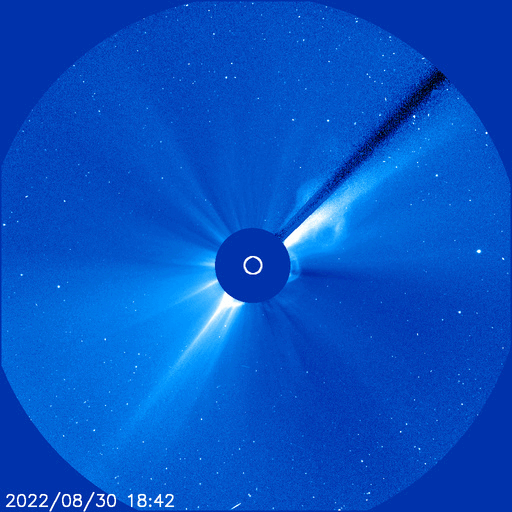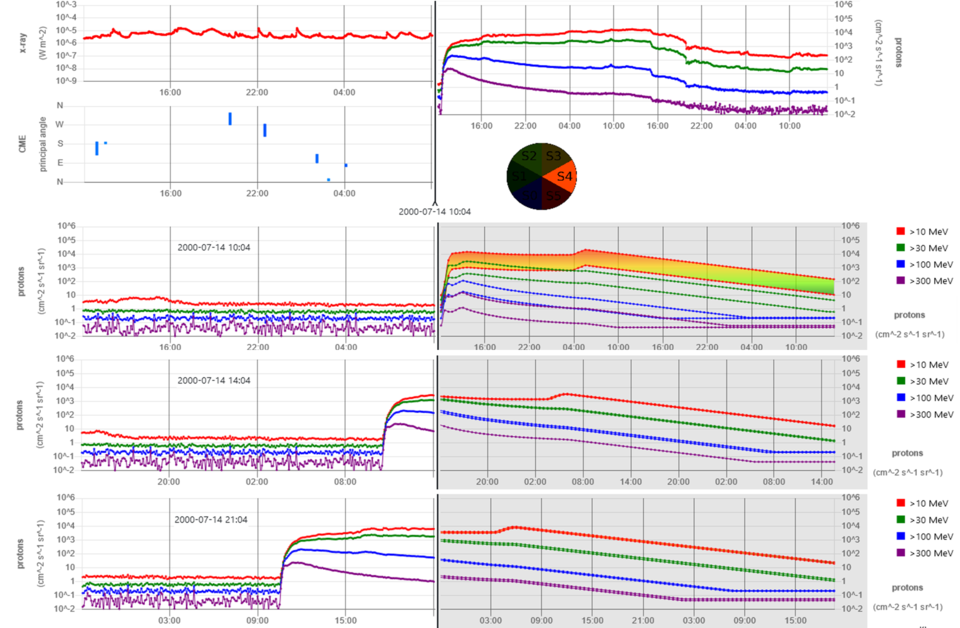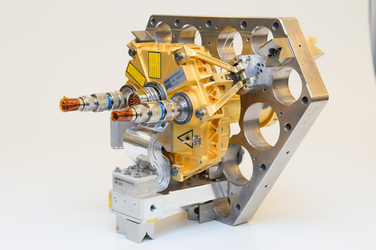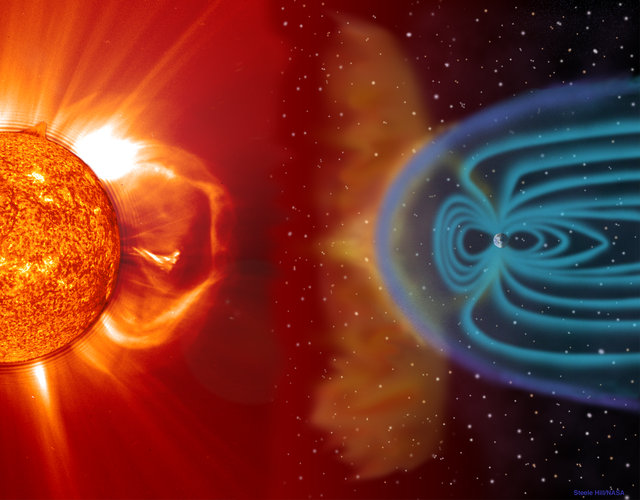Forecasting Solar Storms with the Solar Energetic Particle Advanced Warning System
The energetic and explosive ejection of plasma from the Sun can cause intense radiation storms. Sudden, large-scale changes in the Sun’s local magnetic field topology and ultimate re-configuration (known as magnetic reconnection) results in eruptions in the form of solar flares and Coronal Mass Ejections (CMEs). These large-scale solar phenomena events emit vast quantities of electromagnetic radiation and highly energetic particles into space. This can create havoc in the near-Earth environment, leading to potentially catastrophic consequences for orbiting satellites, interplanetary spacecraft, and human spaceflight activities.
The Advanced Solar Particle Events Casting System (ASPECS) is a modular software tool designed to improve the prediction of solar radiation storms. ASPECS operates on a three-tier system, combining a historical database of radiation storms and their driving solar phenomena, with real-time remote sensing and in-situ observations.
The system includes:
Tier One: Forecasting Solar Flares - A solar magnetogram of the Sun’s disk is used to predict the probability of a solar flare. A higher chance of flaring is implied when observations of the Sun’s active regions, which may be seen through sunspots in the visible part of the spectrum, indicate increasing size, complexity and intensity of the surrounding magnetic field. The outputs are probabilistic, given as a function of flare size and the peak- X-ray intensity given in watts-per-square metre (between one and eight Angstrom). Flaring is forecast with horizons varying between 6 hours and 3 days.

Tier Two: Forecasting with the Onset of Solar Energetic Particles - The probability of a radiation storm is predicted by directly combining the output of the solar flare forecast from tier one with the historical observations for similar solar longitudes. This informs users about the magnetic connectivity of the active region to the near-Earth environment – a novel connection for this development.
Alternatively, after the occurrence of a solar eruption, a short-term forecast (or nowcast) is derived from the characteristics of the solar flare (size & location) and/or related CME (width & speed), giving the probability of a large radiation storm forming at different energy levels. Outputs are given at the 90 % and 50 % confidence levels.
Tier Three: Forecasting the Characteristics of Solar Energic Particles - A time profile of the solar particle event is initially derived by matching the current event to the most appropriate output from a database of profiles by a physics-based simulations, re-scaling as necessary. The time series can later switch to an analytical fit of the event as it is occurring if no simulation reflects what is being observed. Much like terrestrial weather forecasting, the system evolves as the radiation storm develops, providing a near real-time profile of the solar particle event at different energy levels.

ASPECS is free to access via a simple web-based graphical user interface. Users access a reliable, near real-time prediction of possible solar events, or an a posteriori simulation of an historic even where the only required input is a date. The modular approach to forecasting enables the easy incorporation of new, scientific developments - avoiding unnecessary duplication and the unnecessary redesigning of the system in the future.
The activity was funded by TDE, developed by a consortium led by the Space Research and Technology Group of the institute for Astronomy Astrophysics, Space Applications and Remote Sensing at the National Observatory of Athens (IAASARS/NOA, Greece), together with the Space Applications & Research Consultancy (SPARC, Greece), the University of Turku (Finland), the Universitat de Barcelona (Spain) and the Belgian Institute for Space Aeronomy (Belgium).
T704-502EE closed in 2022.















 Germany
Germany
 Austria
Austria
 Belgium
Belgium
 Denmark
Denmark
 Spain
Spain
 Estonia
Estonia
 Finland
Finland
 France
France
 Greece
Greece
 Hungary
Hungary
 Ireland
Ireland
 Italy
Italy
 Luxembourg
Luxembourg
 Norway
Norway
 The Netherlands
The Netherlands
 Poland
Poland
 Portugal
Portugal
 Czechia
Czechia
 Romania
Romania
 United Kingdom
United Kingdom
 Slovenia
Slovenia
 Sweden
Sweden
 Switzerland
Switzerland































